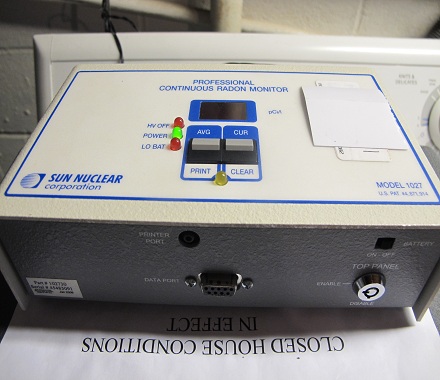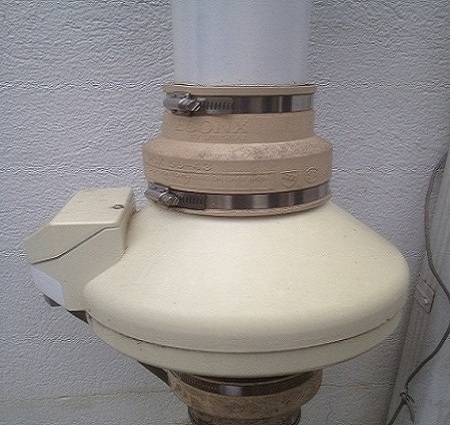Radon is a radioactive gas that is released into the air via the natural decaying of uranium in soil and rock.. It can be found in homes new and old in every state across the country. It moves through the ground and into your home through hollow block walls, cracks and other holes in a foundation, and openings around floor drains, pipes, and sump pump pits.
You can not smell, see or taste radon. It is estimated that 1 out of 15 homes across the country have elevated radon levels, and in Pennsylvania it is estimated that 40% of the Commonwealth’s homes have radon levels that exceed EPA guidelines. After smoking, radon is the second leading cause of lung cancer, and the EPA estimates that radon causes approximately 21,000 deaths in the United States annually.
As a home buyer you can elect to conduct an Radon test as part of your home inspection. You must select a certified radon tester to place a radon monitor in the lowest level of the home. A radon measurement device, such as the one pictured above, samples the air on a regular interval during the testing period which is a minimum of 48 hours.
How Can Radon Be Detected?
There are two types of radon tests:
– Short-Term Test:
These tests are placed for two to seven days and provide a quick screening result. “Closed house conditions” must be maintained during these tests, which include the following requirements:
– Exterior windows and doors are kept shut, except for normal entrance and exit
– Fans and blowers which move air from the outside of the house to the inside, or exhaust inside air to the outside must be turned off
– Whole house fans must be off
– Air conditioners must be put on “recycle” or “max.-cool,” but not on the “fresh air” setting
The house can be occupied during testing, provided the “closed house” conditions described above are maintained
– Long-Term Test:
These tests are placed from three to 12 months and provide a long-term average of the home’s radon level. Closed house conditions are not required for these tests.
Testing devices come in two categories passive and active. A passive monitor is includes devices such as a charcoal canister or alpha track detector, while an active device consists of a continuous monitor.
The cost of a test is about $20 to $30 for a do-it-yourself test, and about $90 to $120 for a certified tester to test the home.
Regardless of the testing length or method, the tests are seeking to determine if the level of radon exceeds the EPA guidelines of 4 pCi/L. In technical terms pCi/L refers to a measurement of picocuries per liter of air.
For a point of reference the average indoor radon level in a home is estimated to be about 1.3 pCi/L, with outdoor levels measuring roughly 0.4 pCi/L.
How Can Radon Levels Be Reduced In A Home?
Radon levels can be reduced to an acceptable level by installing a radon mitigation system. The most common type of system uses an arrangement of plastic pipes and a fan(s) to vent the radon gas to the outside air, as shown in the picture below. Mitigation takes the form of what is know as “sub-slab depressurization”. The typical cost of a radon mitigation system ranges from $700 to $1,200.
As a buyer a radon test is part of your due diligence when determining whether or not to purchase a given home. From a seller’s perspective you can almost be certain that a buyer will perform a radon test as part of their home inspection, and if the readings indicate the level is in excess of the EPA guidelines you in all likelihood will need to install a radon mitigation system.
Wallingford PA Real Estate -Wallingford, PA 19086



